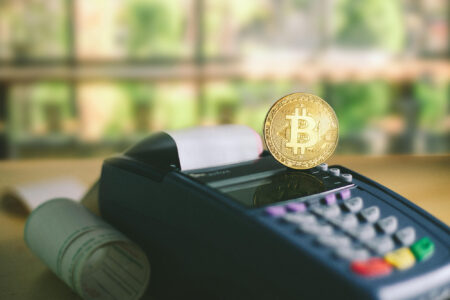Selected articles of the week:
A FIAT-pegged token is a significant pillar in the cryptocurrency ecosystem. So-called stablecoins appear as components in the major currency pairs and are widely used on various centralized and decentralized financial platforms. In addition, the dollar-denominated tokens offer advantages in cross-border payments compared to traditional alternatives. As adoption increases, the sector is also moving up the priority list of regulators. The case of the fallen algorithmic stablecoin UST and the withdrawal of Facebook’s Libra/Diem project illustrate the complexity of the new technology.
Since the fall of Terra’s UST, regulatory authorities around the world have increased their engagement with stablecoins as an industry.
Cryptocurrencies can be used in a variety of ways and are increasingly finding their way into everyday life. Many payment service providers already offer their customers the option of making everyday payments with crypto through hybrid solutions. In Australia, the leading Australian retailer On The Run (OTR) now accepts payments in Bitcoin & Co. at its 175 petrol stations and supermarkets.
175 Australian OTR gas stations and supermarkets are now accepting cryptocurrencies to pay for gasoline and in-store items.
Central bank digital currencies (CBDCs) can be seen as a response from central banks to cryptocurrencies and other digital payment alternatives. Although this type of digital currency offers certain advantages in handling compared to cash, consumer protection organizations are concerned about strong compromises in the area of privacy. The Russian central bank wants to use the digital ruble as a fully-fledged payment instrument between private individuals and businesses as early as 2023. It remains to be seen which path Russia’s central bank will take.
Russia plans to introduce a digital ruble for private and institutional transactions in 2023, while CBDC efforts are accelerating worldwide.
Every day, new users join the Web3, acquiring, trading and holding cryptocurrencies or NFTs. Last year in particular has brought investors some significant gains. But in most countries, the new asset class also needs to be declared for tax purposes. In Switzerland, digital assets are generally subject to wealth tax. However, when dealing with cryptocurrencies, some specialties have to be considered that are identical to existing asset classes. Tax advisor Gilbert Lenherr explains what swiss crypto investors need to know.
With the increasing use of cryptocurrencies, the declaration in the tax return plays an important role: the particular case of Switzerland.
In addition: In the past few weeks, there has been movement in the cryptocurrency markets. One of the main drivers is the upcoming change of the consensus algorithm of the Ethereum network. The network is facing the biggest change in its history with the “merge”. From mid-September, the consensus algorithm and thus the network infrastructure should switch to Proof of Stake. A large part of the current rewards for miners will be eliminated. It is therefore no wonder that spin-off initiatives from the main network are now emerging. After all, cryptocurrency protocols can be “forked.” In doing so, a group of miners continues a copy of an existing blockchain with modified parameters, which acts as an independent chain including its own token. From this fork, a new ecosystem arises, provided there is adoption by operators and users. The Bitcoin forks Bitcoin Cash and Bitcoin SV as well as the Ethereum fork Ethereum Classic serve as classic examples. Savvy exchanges are already offering futures contracts on potential Ethereum alternatives.
A summarizing review of what has been happening at the crypto markets of the past week. A look at trending sectors, liquidity, volatility, spreads and more. The weekly report in cooperation with market data provider Kaiko.









